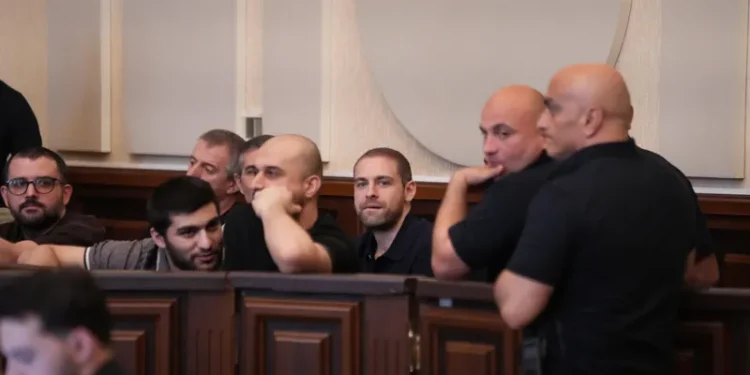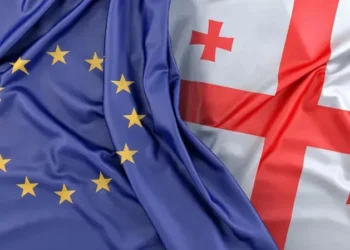During the ongoing trial of eleven individuals charged with group violence at Tbilisi City Court, Irakli Gvelesiani, an investigator from the Ministry of Internal Affairs, testified about reviewing video footage recorded by the MIA press service.
Earlier in the hearing, Tamar Chanturaia, a representative of the Emergency Situations Management Service, provided testimony regarding the damage inflicted on public equipment and vehicles during the demonstrations.
Additionally, defendants Andro Chichinadze and Onise Tskhadadze addressed the court. Tskhadadze directed comments to Rev. Iakob, stressing the need to separate religion from politics. Chichinadze, on the other hand, criticized the media’s role in the case, underscoring a violation of the presumption of innocence in televised reports.
The charges against the eleven demonstrators stem from a protest that escalated into violence in Tbilisi. The prosecution claims that the demonstration, which was initially organized as a public gathering, turned disorderly and resulted in clashes with law enforcement. The participants now on trial are accused of engaging in coordinated group violence, a criminal offense under Article 225 of Georgia’s Criminal Code.
Prosecutors claim that some demonstrators took aggressive action against police barriers, set objects on fire, and defied lawful orders. The investigation relies heavily on video footage recorded by the Ministry of Internal Affairs’ press service, which, authorities say, identifies specific individuals among the defendants committing unlawful acts.
Among those named are Ruslan Sivakov and Sergey Kukharchuk. Investigator Irakli Gvelesiani testified in court that Sivakov was captured on video moving a police barrier, while Kukharchuk is seen setting an object on fire. These actions form a central part of the state’s case, which alleges that the protest went beyond the bounds of peaceful assembly and turned into an organized act of resistance against public order.
Defense lawyers have pushed back against these claims, suggesting that the actions of the accused were spontaneous and not premeditated.
The trial has attracted public interest due to its potential implications for freedom of assembly and expression in Georgia, particularly in a climate where tensions between protesters and the government remain high.














